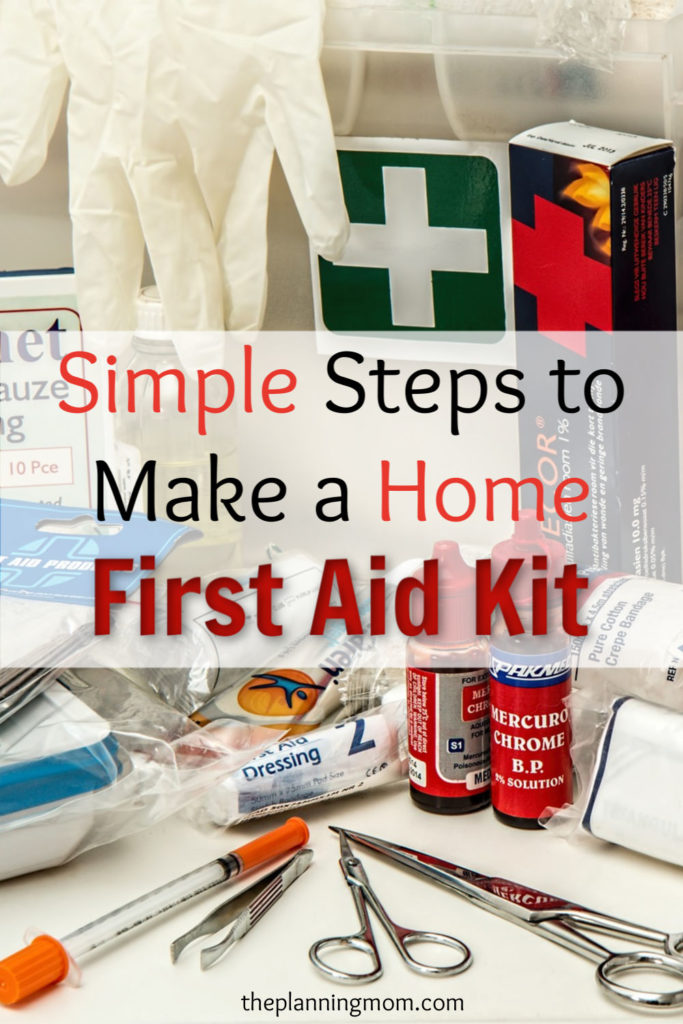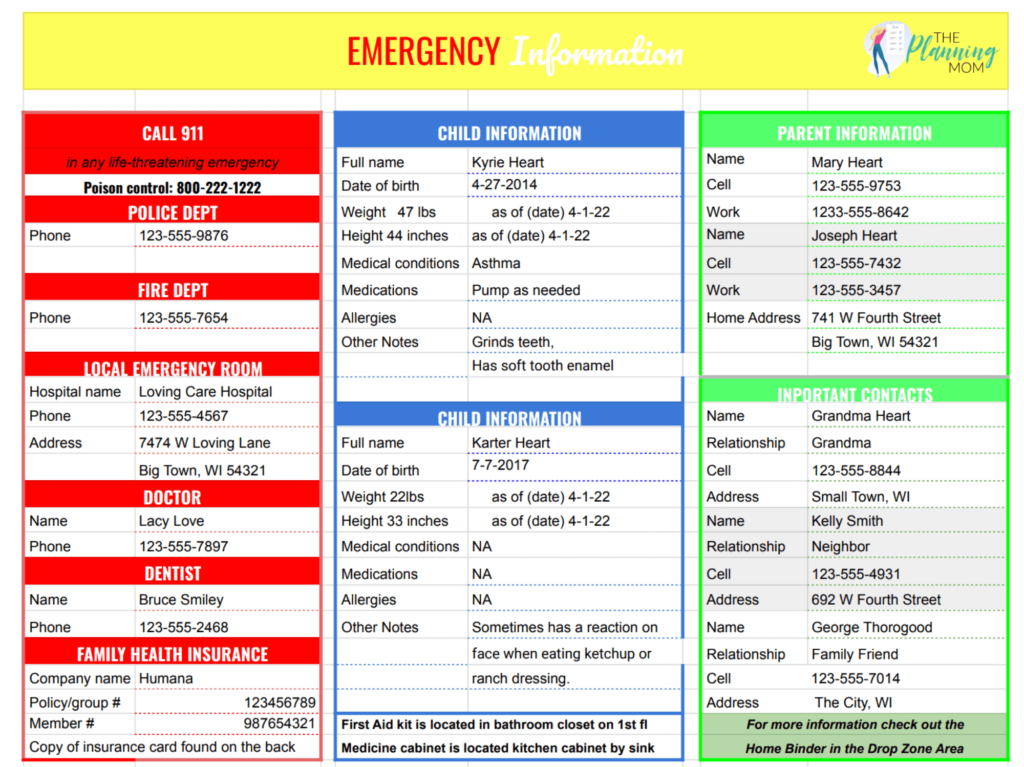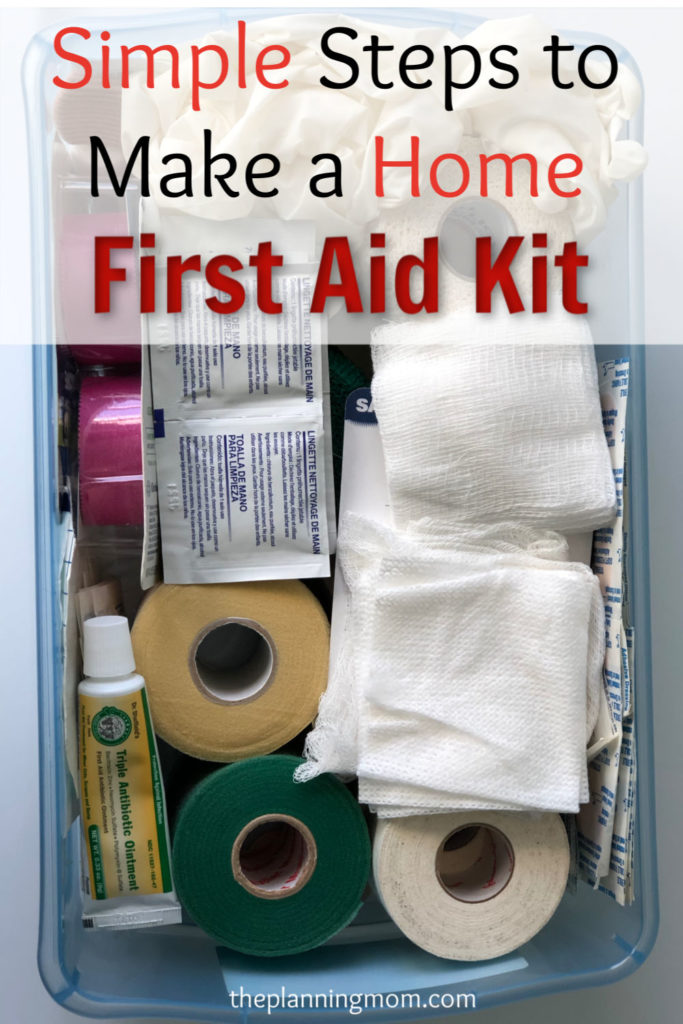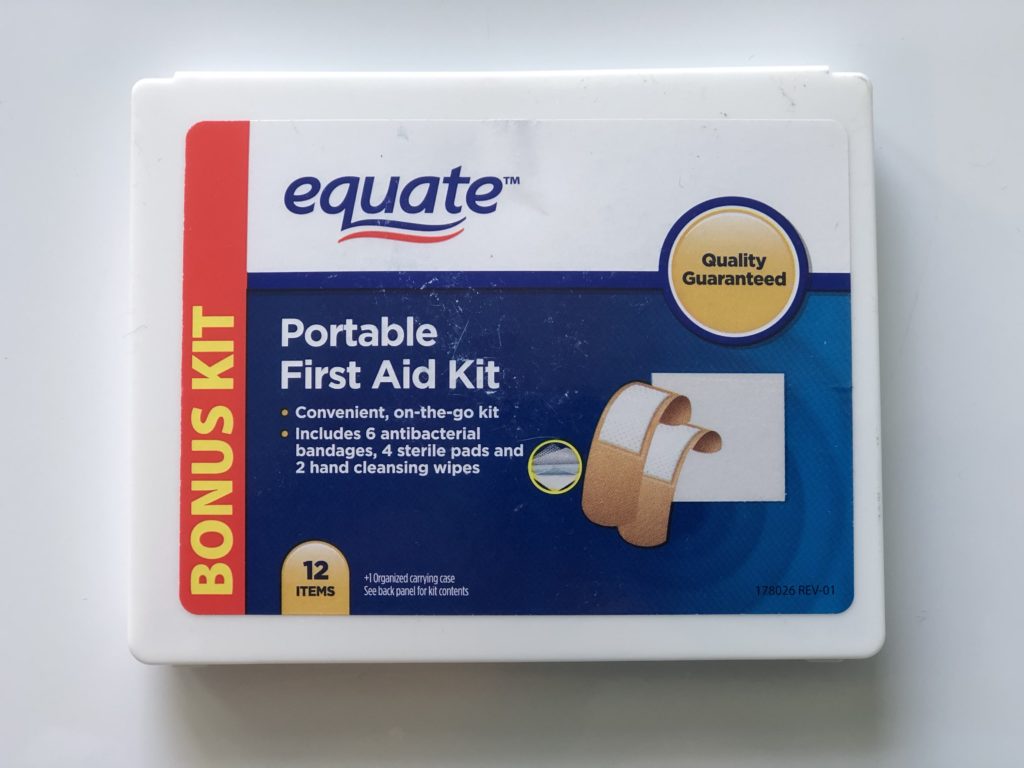Are you prepared for a medical emergency at home? A properly stocked first aid kit is essential to any home, especially one with children. In the event of a minor cut or major emergency, the first aid kit becomes extremely important. You are bound to use first aid from time to time and want to be prepared when the need arises. Follow these simple steps to make a home first aid kit to use in any situation.

First Aid Kit Basic Supplies
There are many different supplies that you can include in your first aid kit. I like to start by purchasing a simple generic first aid kit like this one and then add things from there. A basic first aid kit should include the following (the quantities may vary depending on the size of your family and the age of your kids):
- Different size bandages
- Sterile gauze pads
- Antibiotic ointment
- Alcohol wipes
- Antiseptic towelettes
- Q-Tips
- Instant cold compress
- Athletic or adhesive tape
- Scissors
- Rubber gloves
Personalize the First Aid Kit For Your Family
There are a variety of first aid items that not everyone uses so they are not included in a basic first aid kit. Although, every family needs some additional items to make a home first aid kit. You have to decide what would be useful for your family. For example, if you have a child or two that play sports, you may want to keep an ace bandage for sprains, athletic tape for jammed fingers or to wrap around an injured area.
Take a walk down the first aid aisle at your local drug store to get anything you may have forgotten. The worst thing that can happen is improvising or running to the store to buy an item in an emergency. If that does happen, then you know going forward to keep that item in your kit.
Additional First Aid Items to Include In Your Kit
- Ace wrap bandage
- Burn cream
- Sting relief pads
- Finger splints
- Gel pads
- Pre-wrap
- Tweezers
- Saftey pins
- Oval eye pads
- Eye patch
- Wound gel
- Butterfly closures
- Basic medications: aspirin tablets, non-aspirin tables, ibuprofen, antacid tablets
- Antiseptic skin cleanser
I thought I had a pretty extensive home first aid kid and then one day I had to take my child to the doctor for a minor injury and the doctor asked if I had “antiseptic skin cleanser” at home. I told him I had never heard of it and he told me what it was and where to find it and said “with small kids you should have a bottle of this at home”. So I got a small bottle of it at Walgreens for several bucks and have used it many times since. So check with your doctor or your child(ren)’s doctor for other first aid items you should include in your kit for your family.
Baby First Aid Items
If you have a baby your first aid kit could have a few additional items like the following:
- Thermometer
- Baby acetaminophen
- Baby ibuprofen
- Medicine dropper
- Liquid soap
- Sunscreen and lip protection
- Insect repellent
- Calamine lotion
- Hydrocortisone cream
- Electrolyte replacement solution
Keep an Up to Date Emergency Information Sheet
Part of a fully stocked first aid kit is to be prepared in the event that an emergency arises. This includes having a current emergency information sheet with your first aid supplies. I use this emergency information sheet below because it includes many different items and more than just emergency numbers and contacts. You can grab your FREE emergency information sheet in my planning printables library. Simply scroll to the bottom of this post.

How to Store First Aid Supplies
First aid supplies should be stored in a cool, dry place with easy access for adults. They should be stored high on a shelf out of reach for small children. Some places to keep a home first aid kit would include a bathroom closet, laundry room cabinet, medicine cabinet, or kitchen cabinet.
I like to store my first aid supplies in a small plastic bin – about the same size as a shoe box. Growing up we kept our first aid kit in a shoe box. So use what works for your first aid kit supplies. It should be small enough to fit inside a cabinet or closet but large enough to hold all your supplies.
Some people like to keep their home medicines with the first aid kit. In fact, I like to keep the medicines and the first aid kit on separate shelves but in the same cabinet. I have my emergency information sheet posted inside the cabinet door.
Store your first aid kit where it fits and makes sense. If you do keep your first aid kit separate from your medicines, keep a copy of the emergency information sheet in both locations.

Locations to Keep a First Aid Kit
Families are always busy and on the go. Since we are not always home, we may need a first aid kit away from home as well. Actually, when we are moving, being active, and on the go is typically when injuries occur thus needing a first aid kit. Currently I have 5 first aid kits throughout my home. They are all not the same or include the same supplies, but they are strategically located for where we typically need them.
Main First Aid Kit
There are several locations to keep your big, main first aid kit and supplies. Personally I keep ours in our laundry room cabinet. Some other good options are a bathroom closet or cabinet, or kitchen closet or cabinet. You want your main first aid kit to be centrally located and with quick and easy access to those who know how to use first aid. It should not be under a pile of other stuff, or somewhere where you cannot see it. Mostly, a first aid kit is needed in a quick or emergency type situation and there is not time to dig around to find it.
Bathroom First Aid Kit
Now you are probably thinking we just talked about how your main first aid kit could be in the bathroom. I listed bathroom first aid kit on here if you have multiple bathrooms or decided to keep your main first aid kit in the laundry room or kitchen. For example, I keep my main first aid kit in the laundry room which is on the first floor. In my bathroom on the 2nd floor I have another first aid kit. This kit is much smaller and only contains the basics. However, this way every time I need a bandage, first aid cream, or athletic tape I don’t have to run down to the laundry room to get some.
Car First Aid Kit
There are so many times when we are out at an event, at the park, shopping, or driving somewhere where a first aid kit has been needed. Keeping a small first aid kit like this in the car has certainly come in handy.
Diaper Bag/Purse First Aid Kit
I keep a pretty extensive first aid kit in my diaper bag. With having a baby you have to be prepared for just about anything. Thankfully I have not had to use much more than a bandage, but I want to be ready if the need arrises. I basically keep all the same supplies that are in my main home first aid kit, but the quantity a lot less. The diaper bag first aid kit is kept in a gallon size ziplock bag so it is more flexible than a plastic container.
I do keep a small first aid kit like this in my purse. My purse is usually with me wherever I go, so it is a good place to keep a small first aid kit.

Restocking First Aid Supplies
First aid kits should be gone through annually to replenish supplies, throw out anything expired and add anything new you want to use.
I keep an inventory list of what I started with in my main first aid kit. This way each year when I restock my first aid kit I know what I used and didn’t use. Also, keep the inventory sheet up to date if you restocked any items throughout the year. Increase the start quantities on items you depleted.
Final Thoughts on Making a Home First Aid Kit
Making a home first aid kit is absolutely necessary for your family and simple to produce. You never know when an injury or emergency is going to happen and you want to be prepared. First, stock a first aid kit with basic supplies and add in those personal items that your family may use. Second, store your main first aid kit in a common place that everyone knows about, but that small children can’t reach. Third, make several mini first aid kits and keep them in other locations such as your car, purse, diaper bag, or even another place in the house. Finally, check and restock your first aid kit each year to clean out expired items and ensure it is stocked up. I guarantee you will use your first aid kit at some point, so keep your family safe by having one stocked and ready to go.

This is a very detailed guide. Thank you for sharing this with us! Do you also have a school emergency kit for your kids? If yes, what are the things included?
Yes – as a school director of operations I was in charge of having a classroom first aid/emergency kit in each room. It included a variety of bandaids (different sizes), paper towel, rubber bands, safety pins, antiseptic wipes, gauze, and first aid cream. You can never be too prepared with students in a classroom!
I found this blog very informative, keep up the good work. Thanks for the opportunity.
Digitaladvertisementagency
My mom is updating our emergency packs to keep in our storage room and she wants to make a good first aid kit. I appreciate you mentioning how it is important to invest in bandages of different sizes. I’d imagine that it would also be beneficial to find bandages that are natural and hypoallergenic.
Thanks for your comment! Having types of bandaids that best suits who will use them is definitely something to consider.